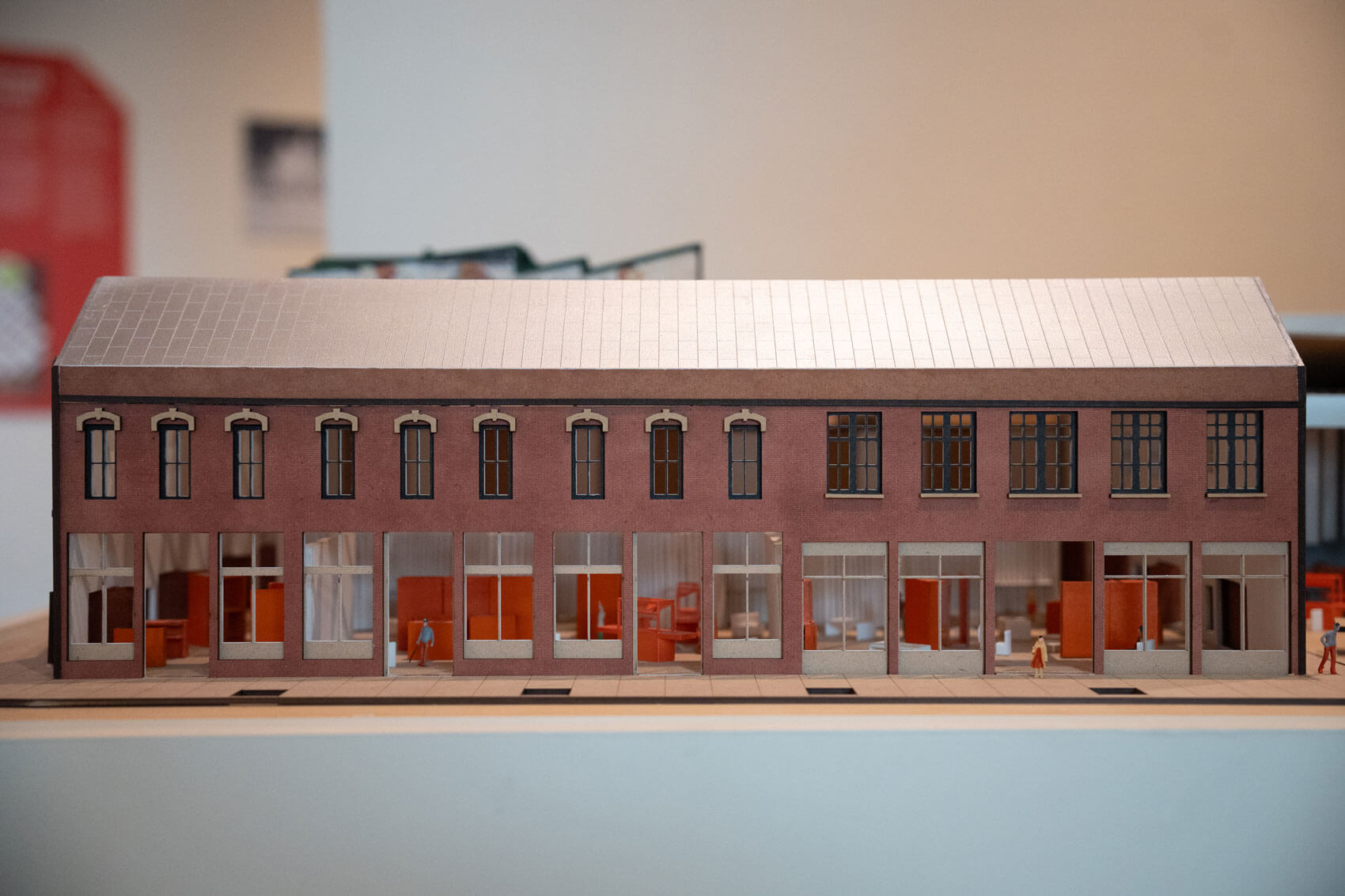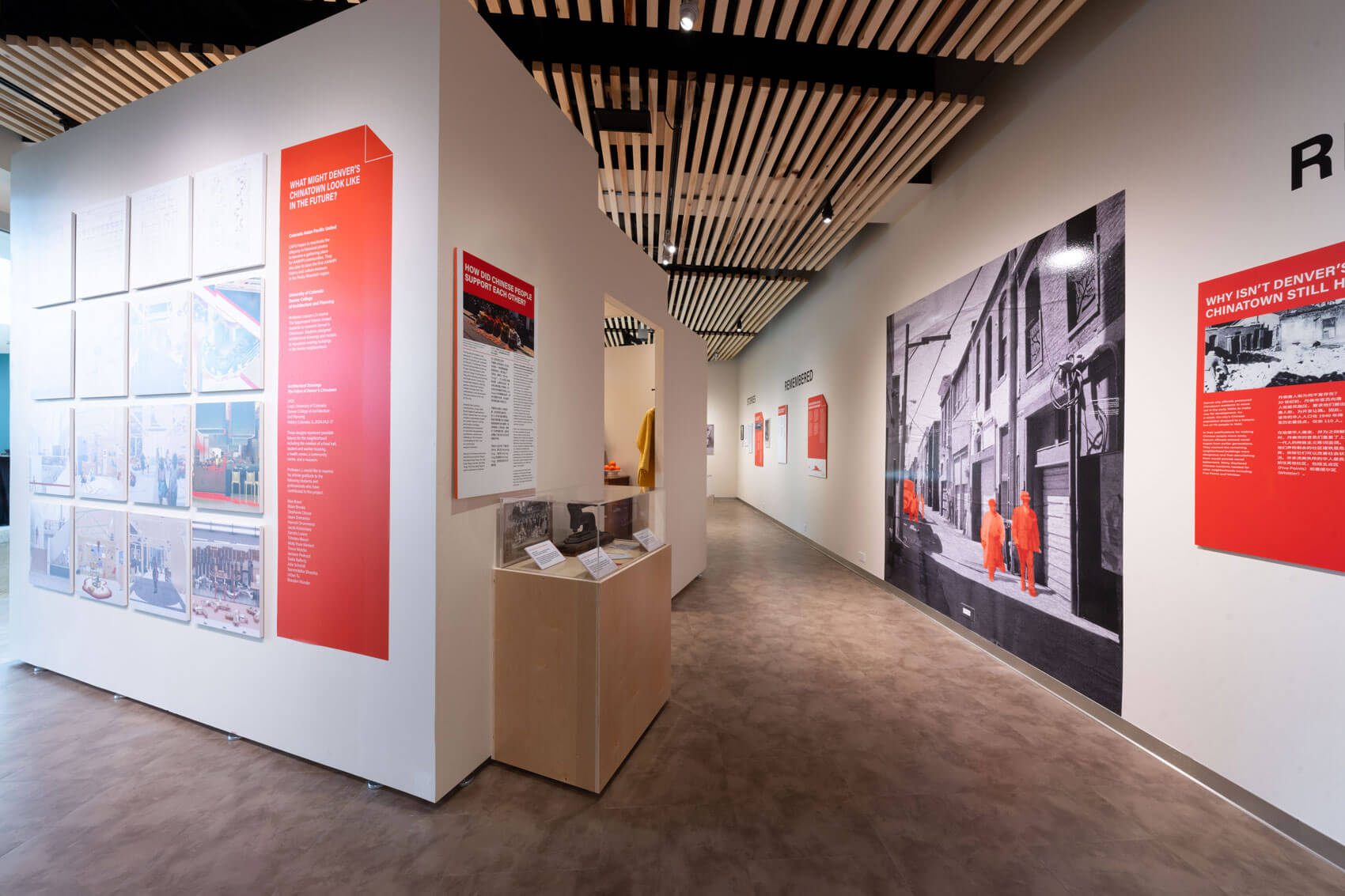Where is Denver’s Chinatown? Stories Remembered, Reclaimed, Reimagined
History Colorado Center
Denver, Colorado
Through September 1
Set diagonally on the first floor of the History Colorado Center, a freestanding, cubic enclosure frames a recreated domestic interior as the centerpiece of an ongoing exhibition on Denver’s long-lost Chinatown. In a museum dedicated to celebrating “Colorado’s rich heritage,” a phrase that suggests the intergenerational transfer of ancestral knowledge, the exhibition’s interior conjures an underappreciated chapter of this history. The mise-en-scène of household “heirlooms” are salvaged from the dispersed belongings held by descendants of Ahmoy Lung, an American-born Chinese woman who was part of Denver’s early Chinese community in the late 19th century. The show, emerging from an ongoing research project by University of Colorado Denver architecture assistant professor Leyuan Li and co-organized with Colorado Asian Pacific United (CAPU) and History Colorado, explores how a spatial practice of repair might memorialize Denver’s Chinatown—a place erased first by racial violence and then by institutional neglect.
Memory Palace
An assortment of lived traces from another time are set inside the exhibition’s enclosure. Together, they define a site of memory and home: a plush, upholstered armchair, a silk-shaded table lamp, a Guanyin altar of Chinese folk religion with an incense burner, a hanging scroll of Ming landscape, a lacquered apothecary cabinet, a metal-cornered wooden case holding a Mahjong set; porcelain tablewares and ceramic mugs with Chinese scripts, tea tins and spirits bottles bearing chinoiserie motifs, so-called “traditional” pharmaceutical herbs and topical ointments; embroidered shoes, silk cheongsams, jade hair combs, and wall-mounted black-and-white photographs—portraits of families and individuals. Here, everyday objects and passé trinkets coalesce into a strange hybrid of a parlor and a boudoir, itself a Chinatown in miniature.

The otherwise soberly discreet white cube overflows with timeworn knickknacks and furnishings, their image working as the token of a place considered to be an immigrant’s point of departure, though this place largely only exists in one’s imagination. The fervor that once propelled migration dwindled, at last, to the size of a sign, which in turn transformed a gallery into a retreat of intimate warmth and well-tended domesticity.
An Urban History of Survival
Indeed, exactly the very systemic hostility that forced Chinatown into being also drove repeated attempts to erase it. The violence that demanded segregation was the same violence that demanded erasure; Chinatown was, from its outset, an interior urbanism for survival. Take Denver. On the perimeter of the gallery space surrounding the interior scene, Where is Denver’s Chinatown? presents blunt, didactic wall texts in the form of a series of truth-seeking Q&As.
According to these pedagogical expositions, Denver’s first Chinese immigrant workers—initially recruited to build the western half of the Transcontinental Railroad—were forced, beginning in 1869, to settle along Wazee Street between 15th and 17th Streets, in a cordoned-off district shaped not by choice but by exclusion. There, they improvised spaces for a frangible kind of safety, in a dense working-class enclave of tenuous refuge and economic exchange—one of several urban ghettoes for the city’s “undesirables.” For all its vibrancy and practicality as a haven, Chinatown was routinely maligned in public discourse as a moral and hygienic threat.

On October 31, 1880, racialized containment gave way to outright obliteration: an anti-Chinese riot left one man dead, hundreds injured, and the neighborhood in ruins. Police stood by, and courts refused to convict. No reparations were made. In the decades that followed, exclusion laws, police raids, and discriminatory housing policies continued the work of demolition by other means. Ultimately, urban renewal sealed the erasure. As a marginal place-making practice of precarious interiority, Chinatown existed by the same logic that sought to destroy it.
With its deliberate curatorial articulation of an artifactual interior and a factual surround, Where is Denver’s Chinatown? refracts the history it recounts by mirroring the very structure of Chinatown’s formation: a makeshift core of refuge born of rejection, encircled by the stark courage to withstand systemic racism. The exhibition enacts, as Chinatown once did, a home fashioned under duress, bordered by refusal, and now made legible through the clarity of disclosure.
Considering women in this history confronts two connected tropes. First, it gestures toward the invisibility of Chinese women from early Chinatowns—with federal immigration laws restricting their entry, resulting in Chinese communities overwhelmingly composed of men and social conditions that rendered the few women who remained doubly unwelcome, both racialized and sexualized. Second, and paradoxically, it recalls the hypervisibility of figures like Afong Moy, the so-called “Chinese Lady” who was brought from Guangzhou to New York City in 1834 as an ethnological curiosity put on display. In this light, the recreated home here is a counter-image to both archival omission and the theater of otherness.

Model Futures
The exhibition’s polemic lies in how it anchors architecture as both artifact and argument. Beyond its evocative staging of an inside scene and outside research, a model by CU Denver architecture students, directed by Li and extrapolated from an 1887 Sanborn map, offers a forensic approximation of Denver’s historic Chinatown. Yet the aerial view, necessarily simplified, cannot capture the neighborhood’s far more labyrinthine reality—how its interiors, reshaped in the 1880 riot’s aftermath, negotiated survival as a defensive topography. Local newspaper accounts depicted the “dark passageways,” “cubbyholes,” and “honeycombed premises” as dens of criminality, yet these architectural features were purposeful designs to limit intrusion and safeguard residents. In response to hostile police raids and mob aggression, Chinatown’s community engineered its interior spaces—back entries, concealed corridors, and layered rooms—to control access and ensure security. Although reporters, often under police escort, frequently exoticized and sensationalized their tours of Chinatown, their accounts unintentionally expose how spatial tactics countered state-sanctioned persecution. What outsiders dismissed as sinister—the false doors, the winding passages, the deliberately obscured rooms—were nothing less than acts of resistance.
More resonant, perhaps, is the students’ speculative model of Chinatown’s future. Conceived as a constellation of adaptable spatial tactics, the model proposes furniture-like elements—walls that expand with families, shelves that archive personal objects, and joinery systems that enable self-built stages for festivals—that together reprogram the existing buildings in the old Chinatown district. In envisioning a networked infrastructure of memory and gathering, these small-scale interventions accumulate into a resilient framework for community life. If the place of dwelling is, as anthropologist Tim Ingold suggests, “perpetually under construction,” then architecture, indeed a practice of hope, must anticipate continuity despite rupture.
An Tairan is a postdoctoral researcher in history and theory of architecture at the gta Institute, ETH Zurich.
→ Continue reading at The Architect's Newspaper
